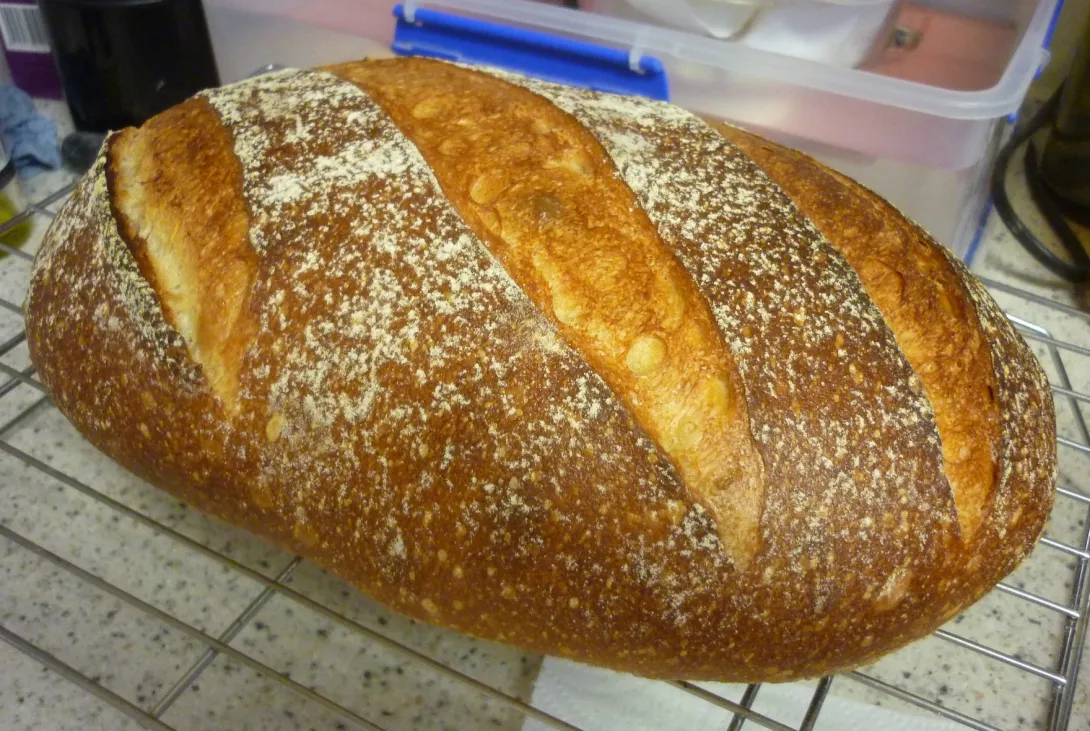
Starter Preparation
Starter dough which was conserved in water for 16 hours at a regulated 20 degrees C was removed from storage and cleaned to obtain the "heart". This involved the removal of a dry crust formed on top and a wet under-layer which were then discarded. The remaining dough was pressed gently before being sliced into strips which were then allowed to soak in a bath made from sweetened water (2g sugar per litre of water). After 20 minutes the dough pieces were removed from the bath and squeezed to remove excess water before being scaled to the required weight. An equal quantity of flour, 1 part starter to 1 part flour (1:1) and 35% water were added to form a dough. This was then left to rise for 2 hours at 28-30 degrees C.
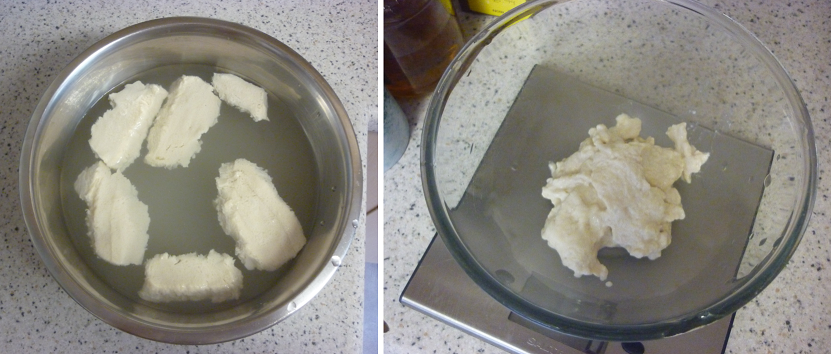
Autolyse
An autolyse process was prepared at 50% hydration using Leckford Estate bread flour (100%) and 1 percent diastatic barley malt flour. The flours were initially mixed with only part of the water to first form a breadcrumb-like texture. The remaining water was then added to allow for the formation of a dough which was allowed to rest covered with cloth until the starter was ready.
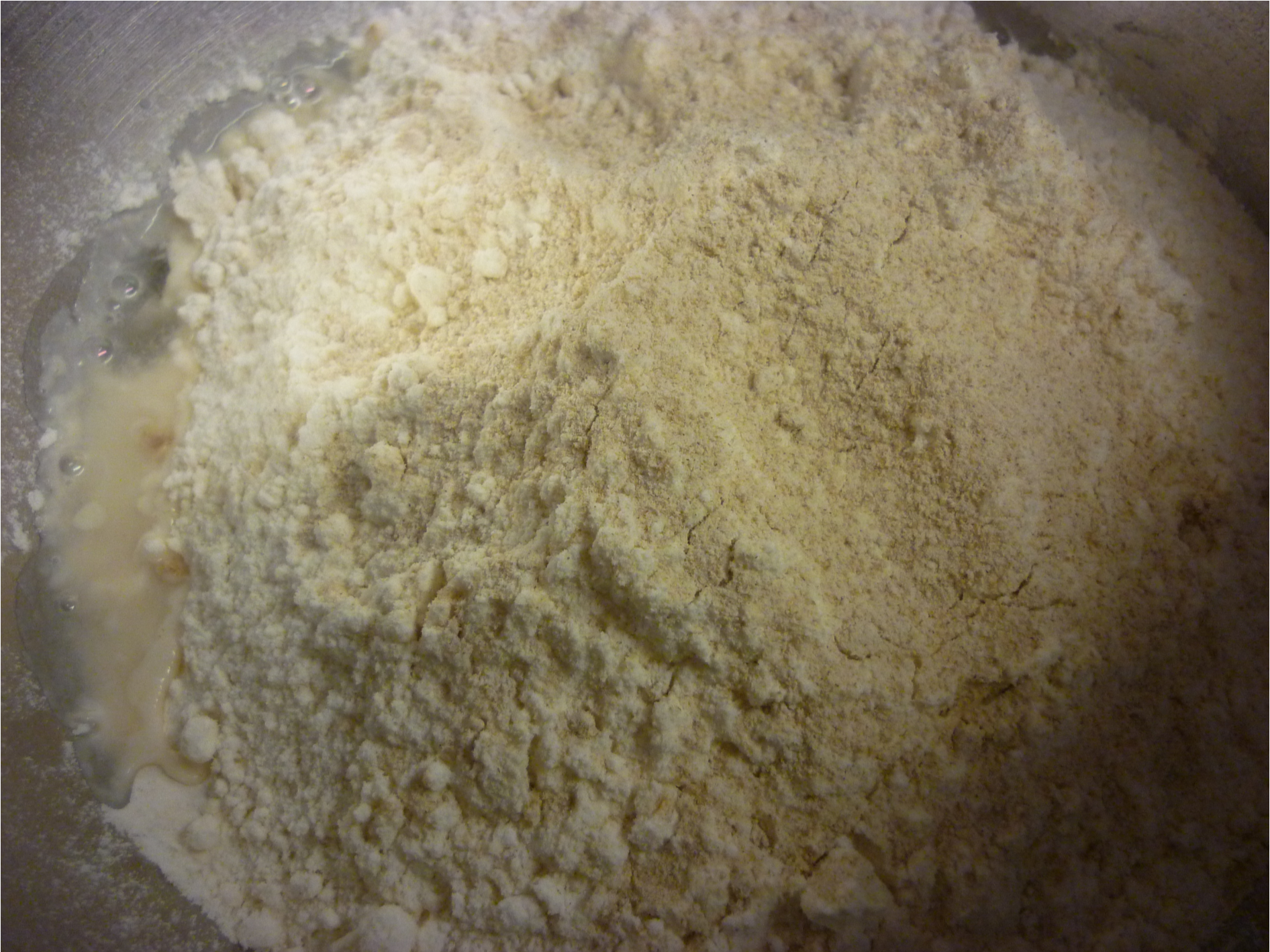
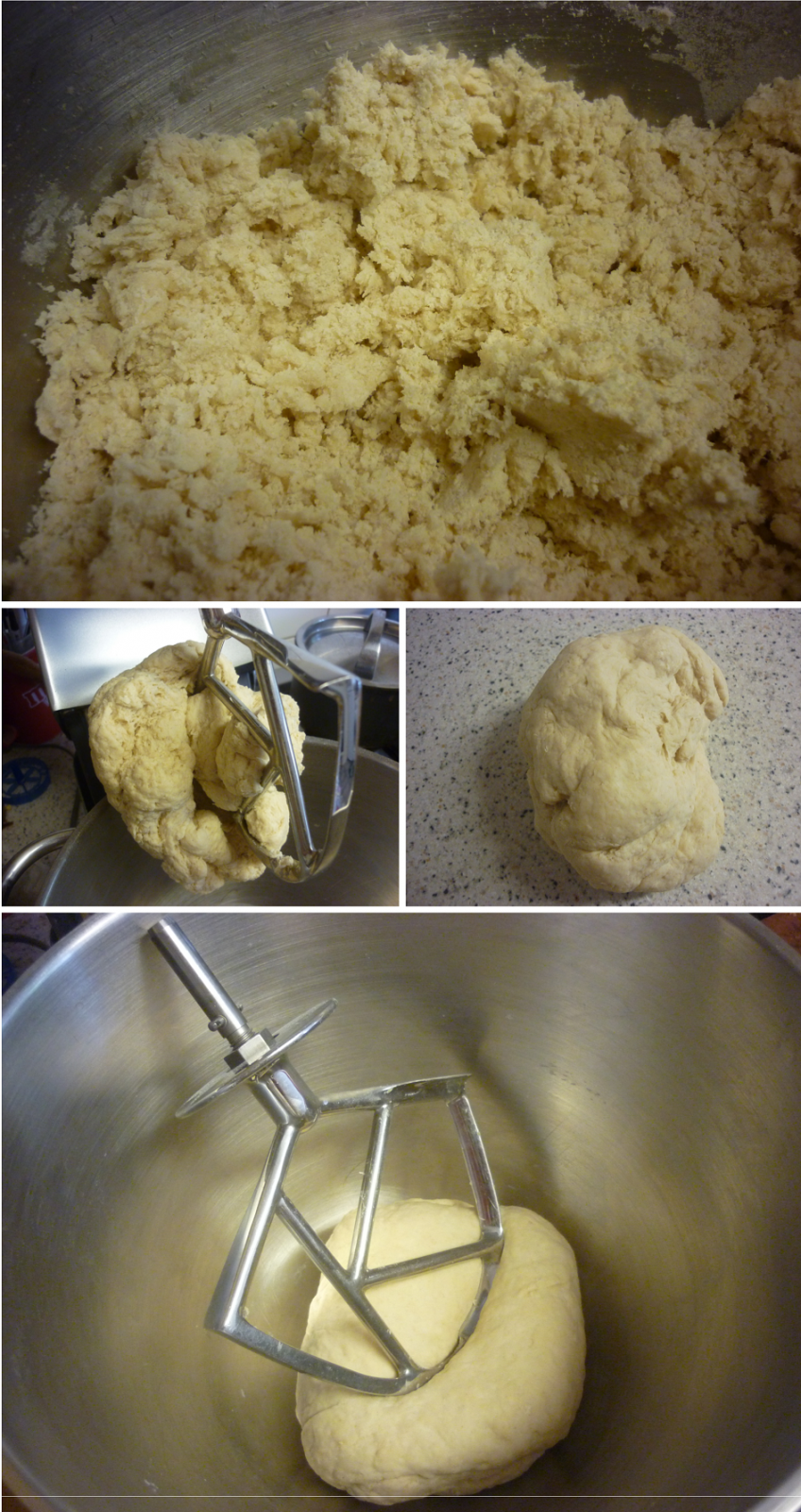
Main Dough
The remaining ingredients; salt and water were scaled and mixed. The starter dough and autolyse dough were divided into 8 roughly equal pieces and mixed together individually by hand kneading before being combined into one dough. This was again re-cut into numerous pieces which were added one by one to the prepared salt water solution with the mixer operating at speed 1. A paddle attachment was used to mix the ingredients until a dough formed that cleaned the bowl. This took approximately 5 minutes. The attachment was then changed to a dough hook before being mixed at speed 2 for a further 5 minutes.
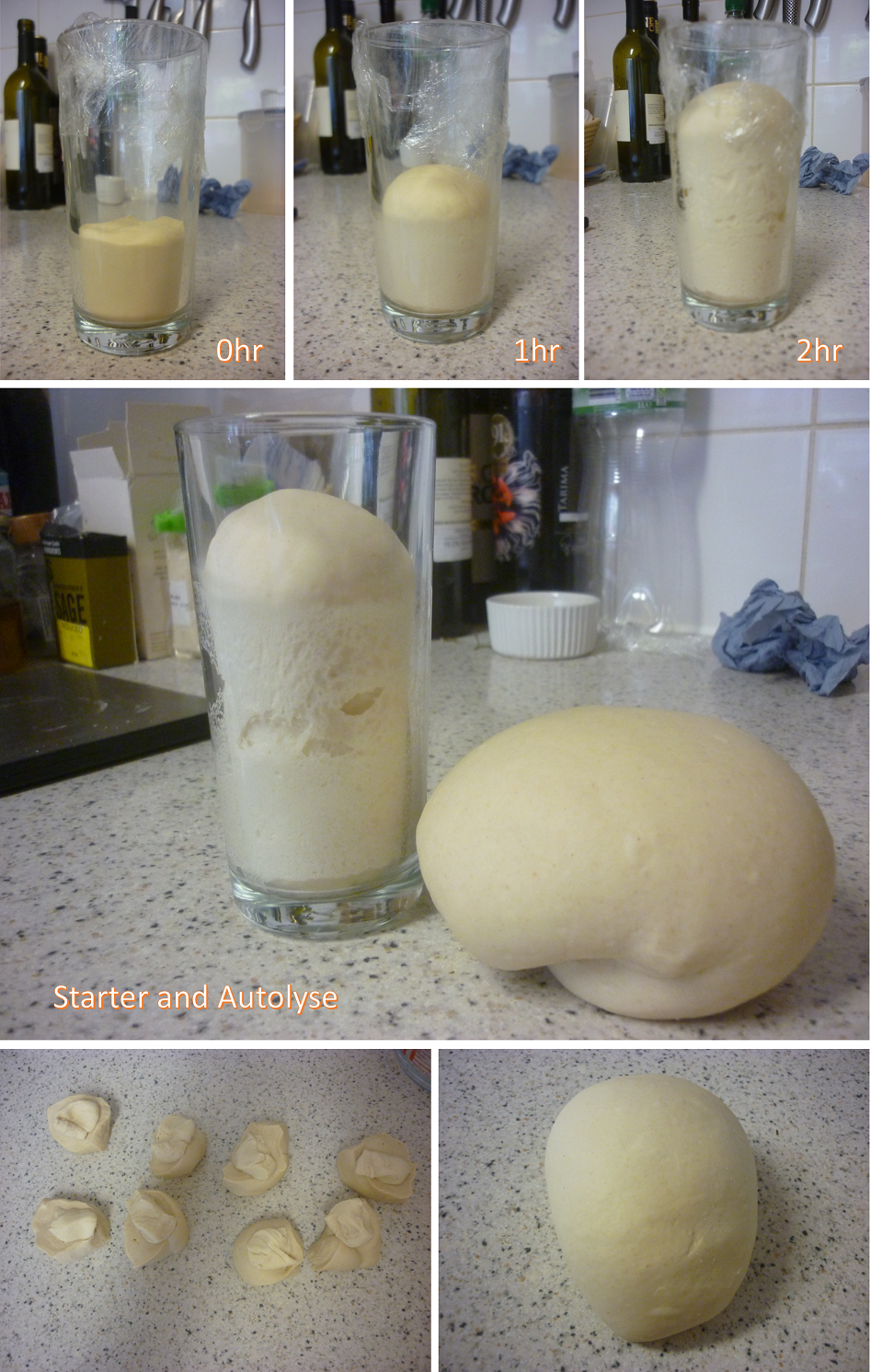
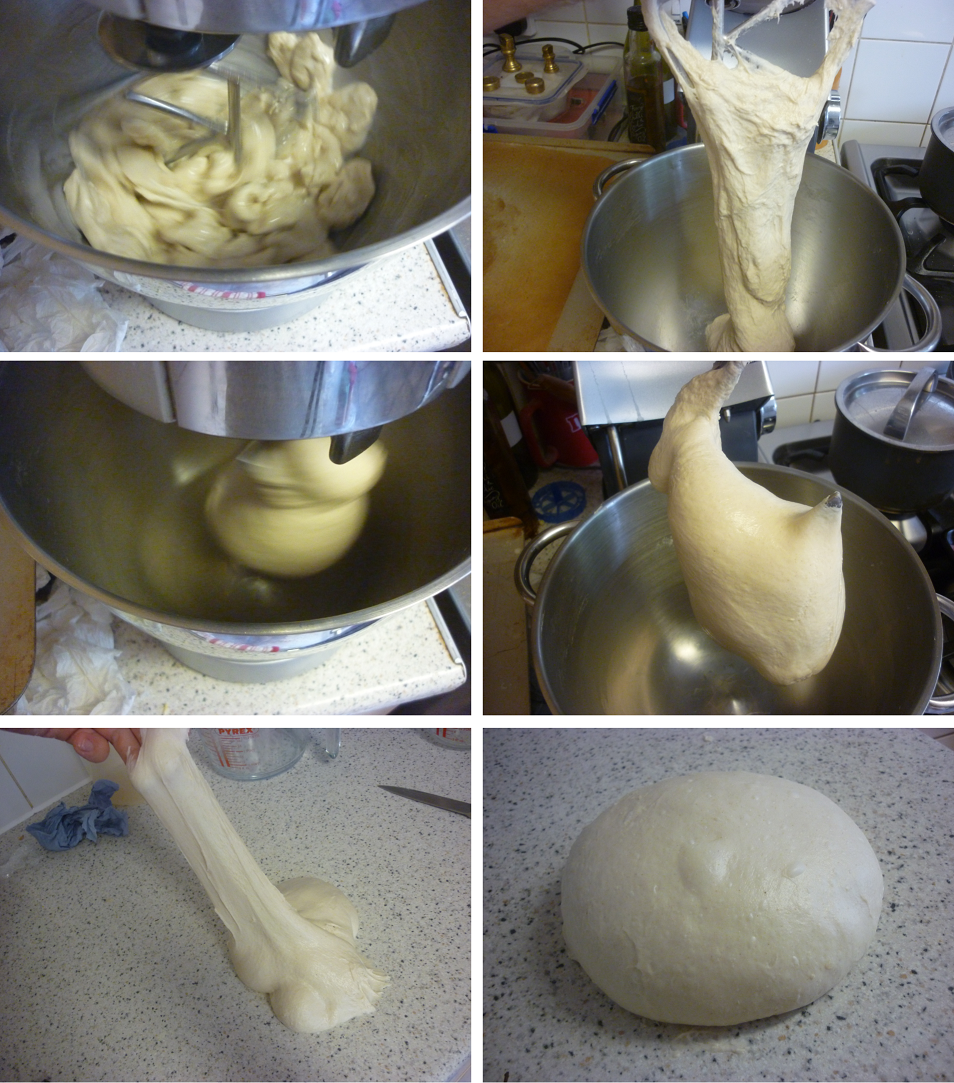
Fermentation
The completed dough was allowed to ferment for 90 minutes at 28-30 degrees Celsius before being shaped and allowed to proof for further 5 hours at room temperature (approximately 25C).

Baking
After the proof period the dough was scored three times and transferred to a pre-heated cast iron stone before being placed into an oven at 230C. Steam was used during the first ten minutes.
Comments
"The finished loaf rose well although it is a little wide for its height. This can be contributed to a number of factors. The original formulation is designed to produce baguettes which require little strength. The flour although marketed as bread flour isn't particularly strong. The method could have been adjusted to allow for a longer bulk fermentation which would have developed more strength before being shaped."
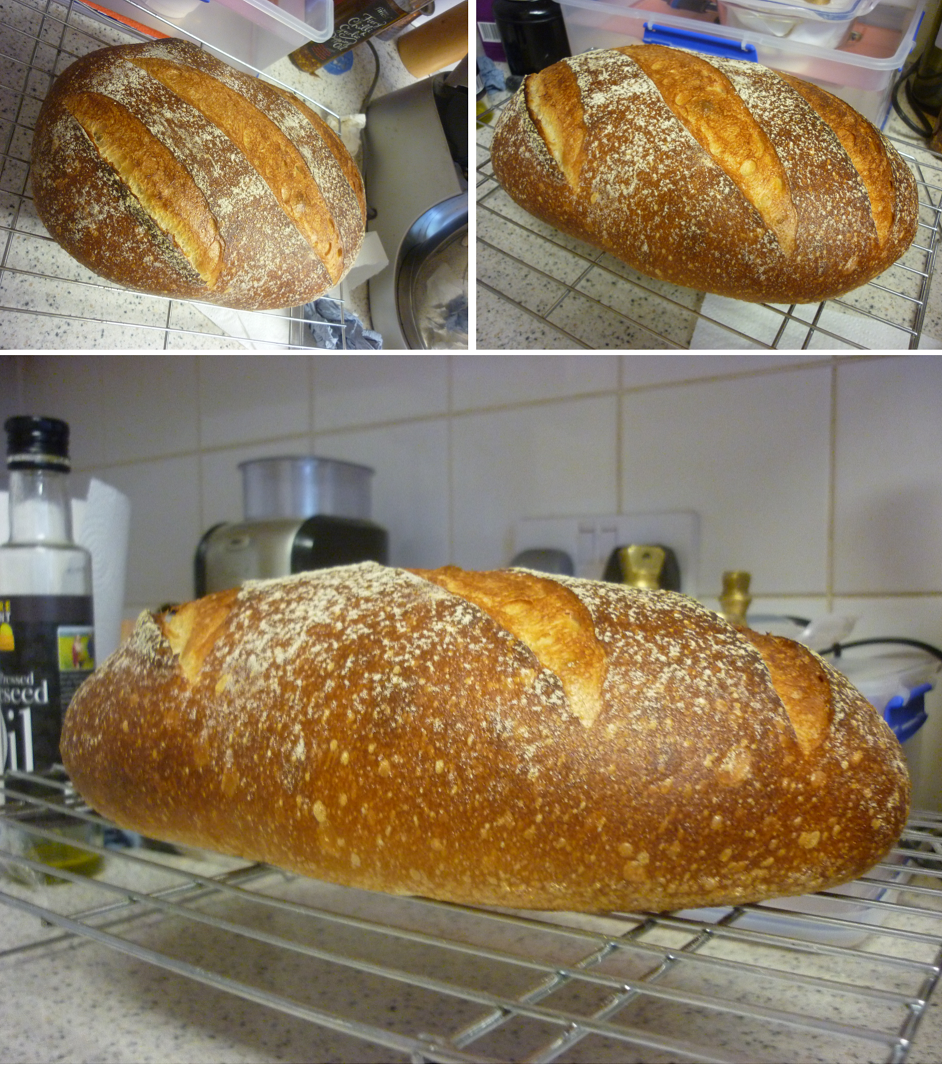
Visual assessment and organoleptic characteristics
Golden hue and many blisters cover the crust. Creamy-white crumb. Wheaty aroma. Slight sweetness on the palate. Soft and light textured with a very subtle hint of mild acetic acidity that finishes through the nose.
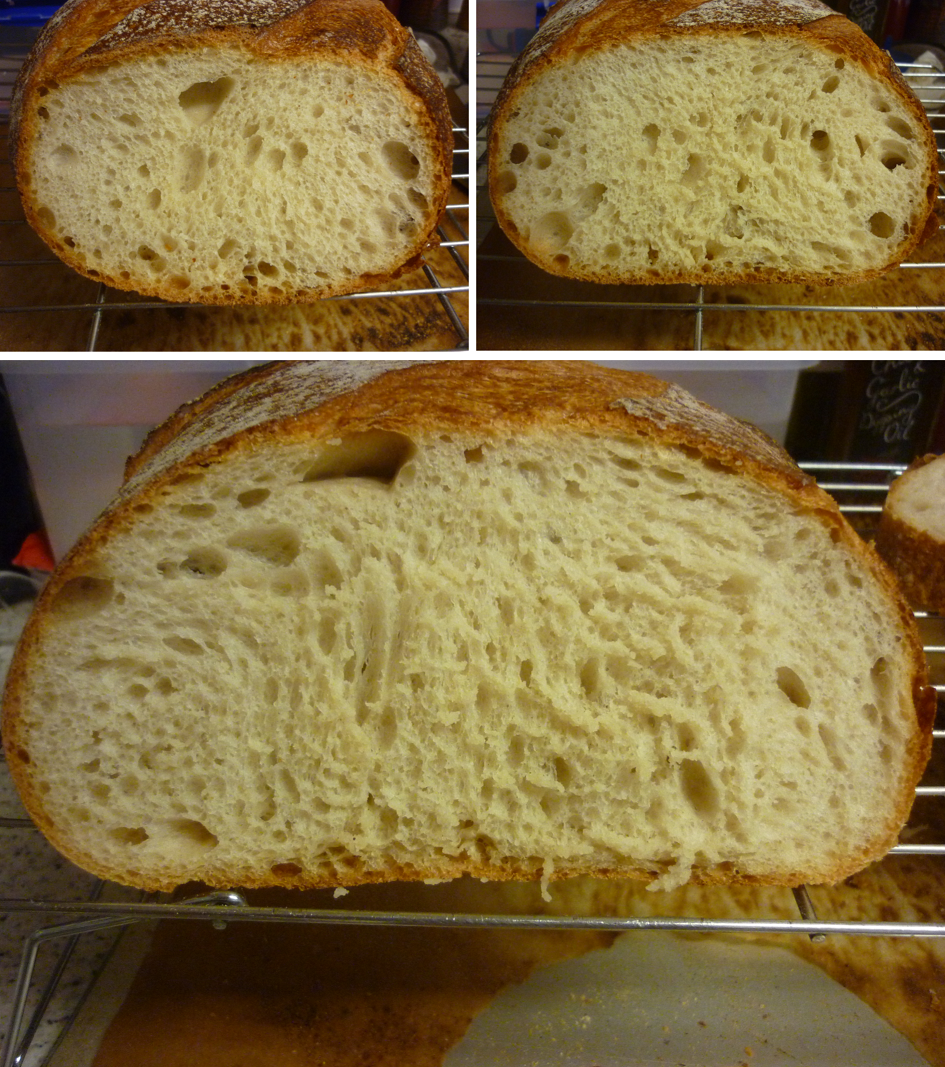
Stats.
14% pre-fermented flour.
68% hydration.
2% salt
- mwilson's Blog
- Log in or register to post comments
Thank you for the very detailed process from which I can learn and incorporate these techniques into my bakes. A nice golden hue with a thin crust and the crumb soft. A lovely bake.
Thanks Abe.
I wanted to share my methods with this blog entry. I hope all the pictures helped.
This was a delicious loaf. Naturally leavened with sourdough starter yet there was no obvious discernible acidity or SD flavour. Still it was very flavoursome and to the average taster this bread could have been made with just yeast.
Cheers
I was very intrigued that this naturally leavened recipe had no discernible sour/acid flavor, which is what I am looking for. However, it is not easy to find a simple source for teaching how to make the lievito madre that I have yet to find. Is there a book or other source that you learned it from?
Thanks for your time
This area of expertise is something I have been personally researching for 10+ years, and nearly all the literature is written in Italian. I have books, documentation from the maestros and web resources I can share or recommend but unless you are willing to overcome the language barrier it may be difficult to learn more. Sorry if that feels like a setback.
If it interests you please have a look at my blog where I have written about LM and the bakes made with it. I saw you mention interest in making a sandwich loaf so please see here to begin: https://staffoflife.wordpress.com/recipes/#enrichedloaf
All the best,
Michael
Thank you so much for your reply. After spending so much time become pretty fluent in French and natural starters, not sure if I have the energy for Italian AND lievito madre..... ;)
I think I actually understand much of what you write and your videos are outstanding. Really.
I started maintaining a second starter at 50% hydration, similar to the LM I have read about and you've written about. I knead it thoroughly, which I'm suspicious eventually gives it the necessary strength not to disintegrate in the water bath. The second day, the sour notes of the starter almost completely disappeared when I tasted it. I'm curious what happens to the microflora over the next weeks. Also, it seems that the regional method you mention about keeping it in water seems easier for a daily bake (as opposed to binding), but I would defer to you.
I think the steps I'm missing are how to use this for a daily bake. Right now, I can make about 8 kilos of sandwich bread at a time and I'm trying to see how I build the LM up for that bake. My levain is about 50% of the final dough weight in order to minimize acetic acid but it's flavor is still there in the background, although mild. I'm thinking about making it closer to 30%. I'm just not sure where the washing step comes in the order of the recipe and also how to incorporate such thick chunks of the LM smoothly into the dough.
Many thanks for your time and advice.
I saw some classic and innovative techniques. Very interesting! I thought the sugar water bath was employed was to remove acidity completely but instead was used to just lessen it. I have never tried a bulk ferment that short even at higher temperatures, I once did a three hour one and it came out underfermented but that has a straight cold overnight proof, maybe the proofing at room temperature was enough for the dough to still ferment enough. I know there were specific reasons why each step was done, reasons which will be too long to explain; but they work so they don't need to be explained. The results are gorgeous!
Thank you Pal.
I started writing this post normally then quickly moved toward the more academic style I have been learning as a Student.
I think my approach to things will always be scientific. Yet I like to think I have that flair a baker needs - to be hands on and intuitive with dough.
I really appreciate how much you like my bread.
Cheers.
You had more success with the Leckford Estate BF than I did!
So what is the purpose of the sugar wash? I also seem to recall seeing a video of a variant where the lievito madre was washed in water containing lemon juice?
Lance
enough it it was the only one you could ever have. It is a shame that my Step mother passed away right a I got to LA to meet you on your last trip to the states and I had to get back to Missouri Bread fix lost as I was at La Brea Bakery waiting for you when word came:) Another time for sure. Love the post.
As for science and AI and all that computer stuff .....what famous painter said sexual gratification can only be achieved by the use of machines? There is no bread for that I guess:-)
Well done and happy baking Michael.
The starter soaking thing was interesting, I don't completely get it, but its fascinating to see how many different ways there are to maintain and prepare a starter.
Your loaves look wonderful! That crumb is lovely, its looks so soft and just yummy!
Well done!
Happy baking
Ru